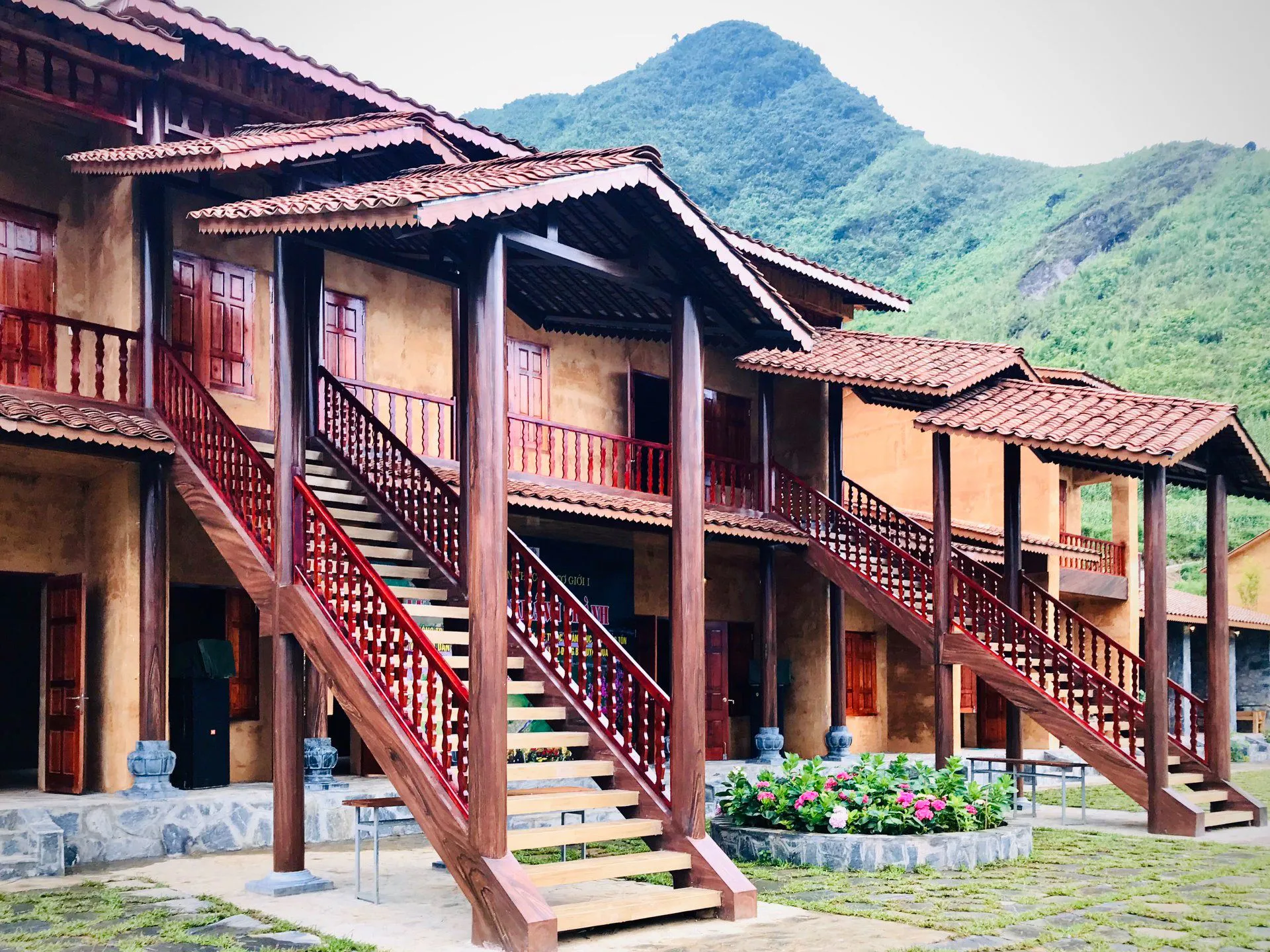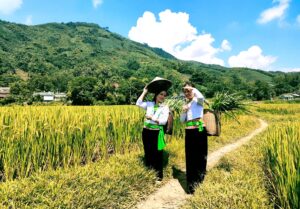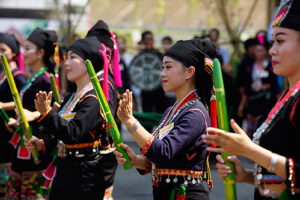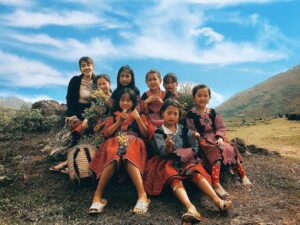Culture Of The H’Mong People In Vietnam
Today, the H’mong mainly reside in Vietnam’s northern mountainous provinces, covering a vast area along the borders with China and Laos, from Lang Son to Nghe An. However, their population is most concentrated in the northeastern and northwestern provinces such as Ha Giang, Lao Cai, Lai Chau, and Son La. Due to their traditionally nomadic lifestyle, some H’mong groups migrated further south in the 1980s and 1990s, settling in scattered areas of the Central Highlands, particularly in Gia Lai and Kon Tum provinces.
The H’mong are divided into four main subgroups: H’mong Hoa, H’mong Den, H’mong Xanh, and H’mong Trang. While there are some differences among these groups, they share a common language and cultural identity, with the primary distinction being the style of traditional women’s clothing.
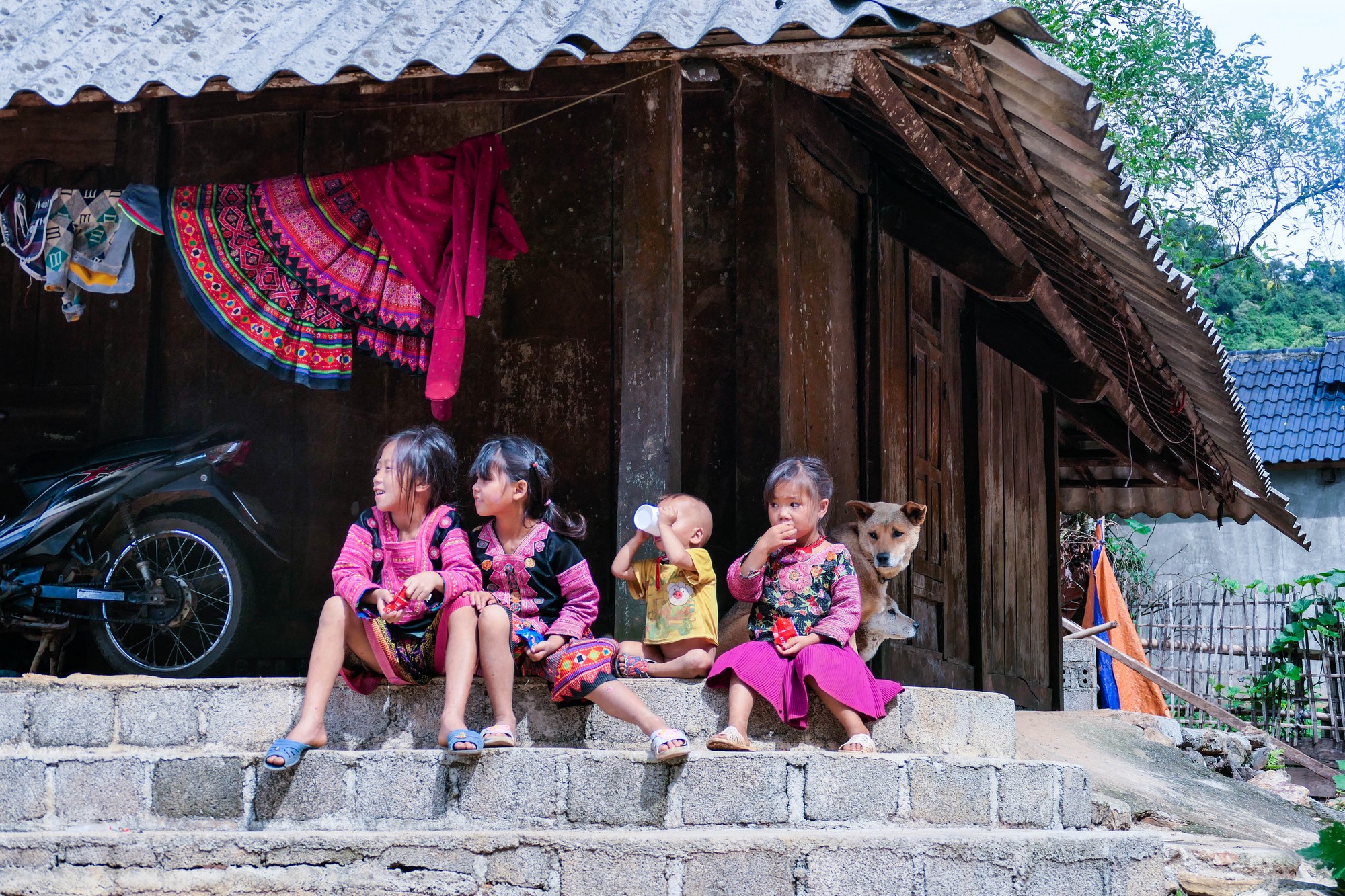
Cultural Characteristics and Unique Customs of the H’mong People
The traditional costumes of the ethnic groups in the Northwestern region are exquisitely designed, carrying deep meanings related to beliefs, culture, and history. Each ethnic group has its own unique style of clothing, but in general, they share common characteristics such as: the use of vibrant colors like red, yellow, green, and purple; a focus on decorative details such as embroidery and embellishments with patterns; and the design of the costumes being suited to the climate and daily habits of the people.
The H’mong people’s attire is particularly distinctive with its intricate craftsmanship and vibrant accessories, showcasing their aesthetic sense and cultural identity.
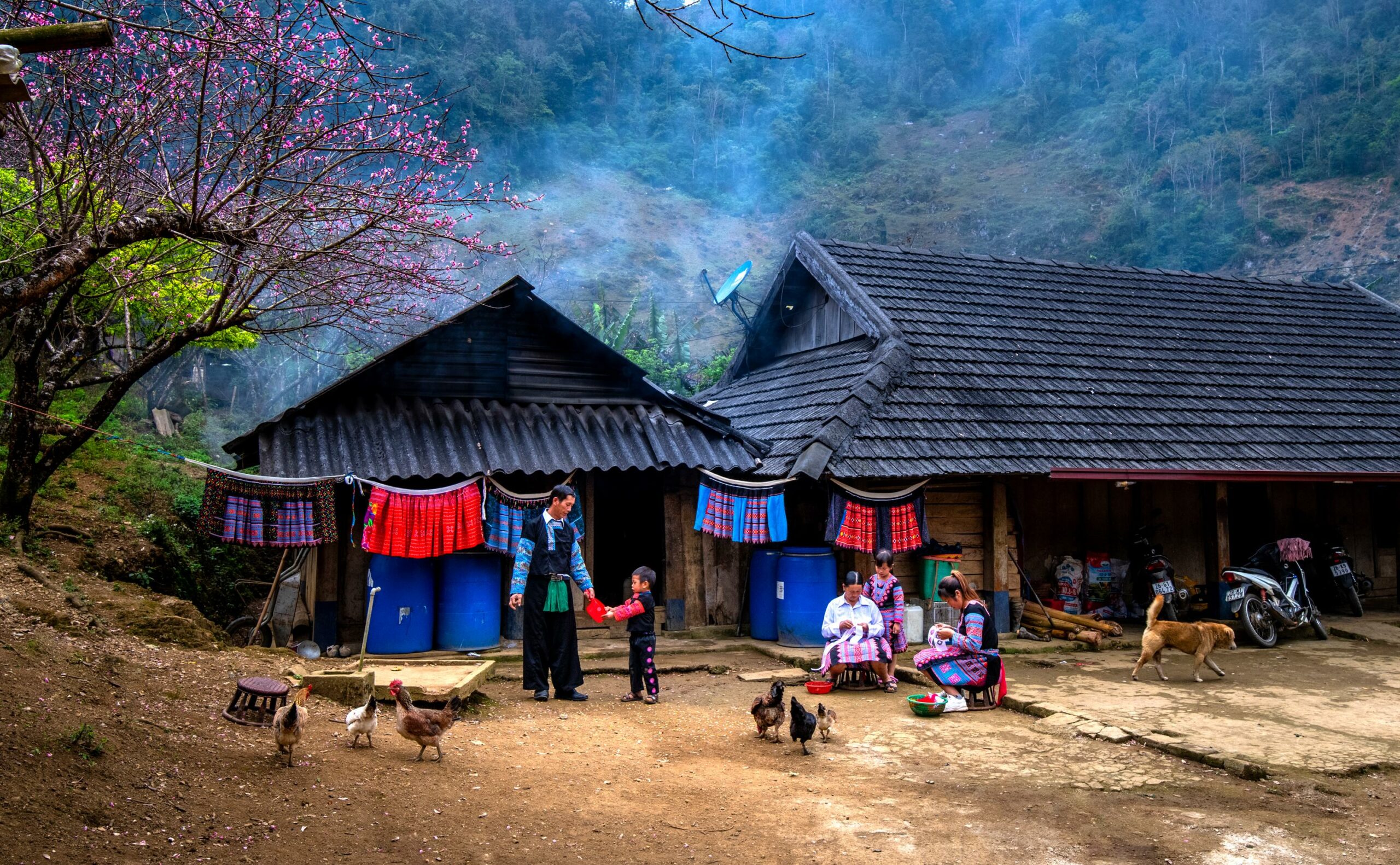
H’mong women’s clothing consists of a pleated skirt with a wide, truncated-cone shape, a blouse with front-opening design, an apron, a backcloth, a sash, a headscarf, and leg wraps. The craftsmanship of these garments is refined, with intricate embroidery, and the use of bright colors like red, blue, and purple. The skirt, made from linen, is usually dyed with indigo and features complex embroidery patterns, reflecting their artistry and attention to detail.
H’mong men’s clothing is simpler, typically consisting of a long-sleeved shirt and pants, often accompanied by a belt or sash. Although not as elaborate as women’s attire, men’s clothing can still feature embroidered details, especially on the cuffs and collar, symbolizing cultural pride.
Meaning and Craftsmanship of Costumes and Embroidered Patterns
Embroidered patterns on H’mong clothing hold deep symbolic meaning, often representing elements of nature, life, mythical creatures, or spiritual symbols. These patterns are not merely decorative but serve as an expression of the wearer’s family, clan, or region.
Crafting the costumes is a highly meticulous process. H’mong women traditionally weave linen from natural fibers, dye the fabric with indigo to create unique colors, and then embroider intricate patterns. The creation of a full traditional outfit requires extensive time and skill, highlighting the wearer’s social status, maturity, and cultural identity.
Accompanying Jewelry and Traditional Outfit Styling
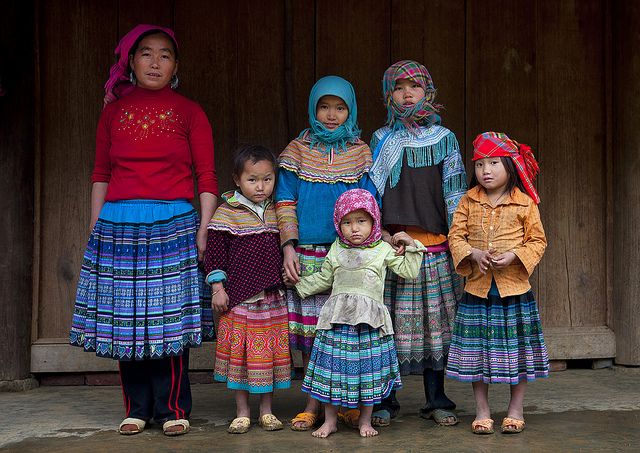
Jewelry is an essential part of the traditional H’mong attire, including necklaces, bracelets, silver earrings, and particularly large and intricate silver jewelry pieces. These accessories serve not only as aesthetic adornments but also symbolize wealth and social status within the community.
Beliefs
In addition, the H’mong people are influenced by Confucianism, Taoism, and Buddhism; however, these religions have blended with animism. As a result, the H’mong shaman always plays the role of an intermediary between humans and deities. Besides ancestor worship, each family also makes offerings to the kitchen gods, door gods, and bedroom gods; within the clan, they worship the clan’s spirits; at the community level, they worship the spirits of the village, including protective deities and local gods, performing rituals for rain, sunshine, or pest control.
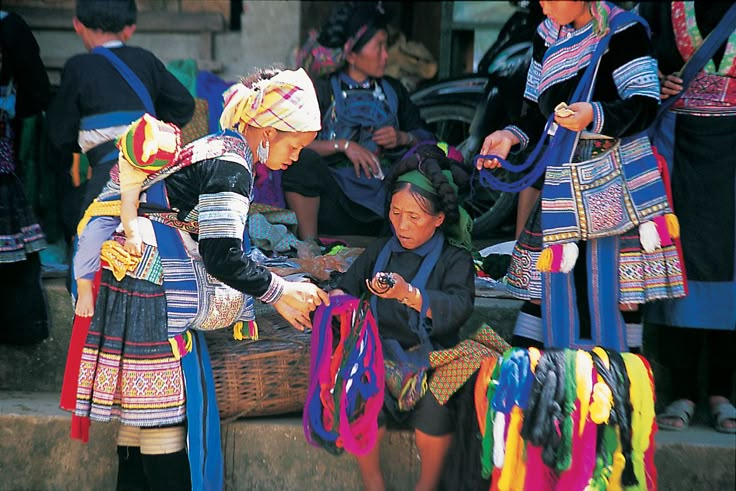
Linen weaving is one of the H’mong people’s most distinctive traditional crafts. In addition, they excel in various forms of handicrafts such as basketry, blacksmithing, saddle-making, and woodworking – particularly in producing household storage items. They also create handmade paper and intricate silver jewelry, catering to both daily needs and artistic expression.
Among Vietnam’s 54 ethnic groups, the H’mong have been particularly successful in preserving their traditional cultural identity. Their heritage, deeply woven into the fabric of Vietnamese culture, adds to the nation’s rich diversity. In today’s era of globalization, maintaining cultural identity while embracing progress requires dedication and long-term commitment. Only through sustained efforts can these cultural values continue to thrive and be passed down to future generations.

